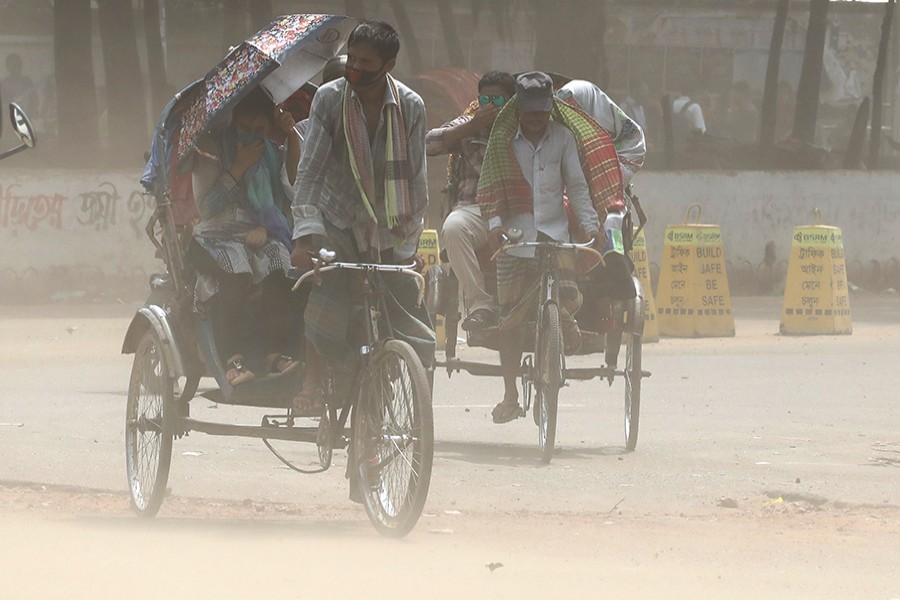
Published :
Updated :

The under-construction Metro Rail and Dhaka Elevated Expressway, eagerly awaited for their potential to ease Dhaka's proverbial traffic congestion, are going through birth pangs, so to speak, and severely at that! Looked up close however, some of these would appear to have been avoidable with a timely mix of precautionary measures. So overwhelmed with work orders and the consequent construction work that picks up a hectic pace, the executing agencies tend to be oblivious to the environmental concerns. As reported in this paper last Saturday, the Department of Environment (DoE), has found the two big under-construction - metro rail and Dhaka elevated expressway - projects playing a role in raising Dhaka's air pollution levels.
Testing air samples collected from different points of the metro rail and elevated expressway projects in December last, the DoE came up with scary findings. At two metro rail project sites, it found that the dust contents of the air samples were 1,137 ppm and 1,111 ppm respectively, while at a selected site of the Dhaka expressway project, it was 473 ppm.
As it stands, as per the Ambient Air Quality Standard, the pollution levels of the stated spots have already crossed the threshold of tolerance stipulated at 200 ppm by more than five times at the metro rail sites and by more than twice at the Dhaka expressway project site! The problem arises from the almost diametrically opposite perceptions between the project execution authorities and the environmental regulatory body, the DoE on the ground issues. The Dhaka Mass Transport Company Limited (DMTCL) and Bangladesh Bridge Authority (BBA) claim that they maintain environment during the building work. As a proof of that claim the monthly reports of DMTCL to the DoE have reflected a pollution level below 200 ppm. The DoE has meanwhile slapped some penal measures in monetary terms on the non-compliance of environmental standards but obviously these fall short of requirement. The suffering public wants to see more effective steps than mere warning and fining. The government bodies supposed to monitor these projects need to ensure if the companies running the construction work have taken all necessary steps including, for example, erection of covering sheds to arrest excessive dust emission, or application of water sprays to tame flying dust particles until they settle down. More efficient and advanced methods have to be applied to fight the dust menace or the particulate matter off.
It is obviously not enough to issue alerts to the implementing agencies through letters and newspaper advertisements calling upon them to maintain air quality. Strict monitoring and inspection of whether adequate safeguard measures were put in place by the executing companies apparently went by default. The DoE was found short of asserting its authority, instead it took recourse to some half measures. At the same time it has to be acknowledged that the DoE's enforcement capability is limited by lack of logistics support including testing equipment and more importantly, dearth of magistrates and mobile courts.While there is a pointer to the absence of 'hefty budget' needed in maintaining high environmental standard, in the same breath DoE officials reportedly alleged that budget kept for environmental hazards are not spent properly. As a matter of fact, the entire gamut of the issues would have to be gone into and the loopholes plugged so that environmental concerns do get squarely addressed.


 For all latest news, follow The Financial Express Google News channel.
For all latest news, follow The Financial Express Google News channel.